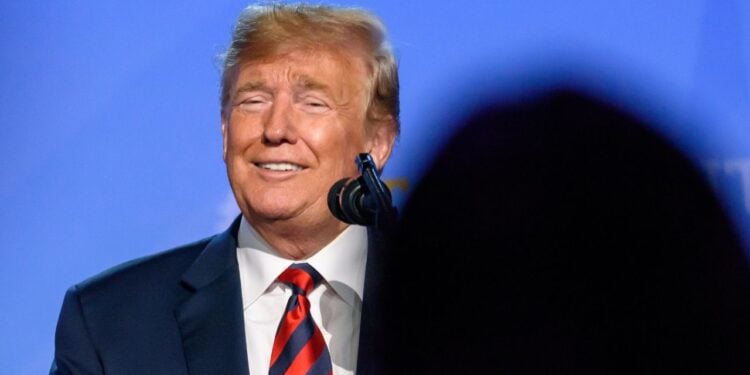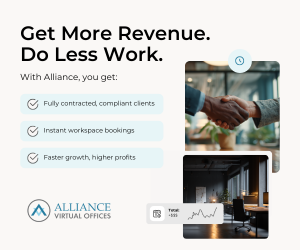- Trump’s return to office may bring pro-business policies like tax cuts and deregulation, encouraging investment in sectors like energy, manufacturing, and technology.
- Despite potential office-centric policies, businesses embracing remote and hybrid models are unlikely to reverse course. Tech investments and flexible work solutions will remain integral to operations.
- Trump’s stance on tech deregulation and AI expansion could drive innovation but raise challenges in data security, worker protections, and job displacement.
As we enter a new year and Donald Trump prepares to take office once again, businesses, remote workers, and the office sector as a whole are left wondering: what will change in the workplace under his leadership this time around?
From the White House to the boardroom, Trump’s policies have historically sent ripple effects through every facet of American business.
Trump’s Business-Friendly Policies Are A Double-Edged Sword for the Office Sector
In his previous term, Trump pushed for corporate tax cuts, deregulation, and initiatives aimed at promoting American manufacturing and job growth.
For businesses in the traditional office sector, his policies often provided a sense of optimism.
The promise of lower taxes meant companies could allocate more funds toward expansion, infrastructure, and new hires. This benefited coworking spaces, corporate offices, and commercial real estate to an extent.
However, as Trump’s return to office looms, the environment has completely changed.
The rise of remote work has forced companies to rethink their office needs, regardless of the tax breaks or incentives offered.
Commercial real estate, particularly in downtown areas, has faced massive challenges since the pandemic. Empty offices, cancelled leases, and questions about the long-term viability of traditional office spaces are now at the forefront of conversations among business owners and workers alike.
The Impact of Trump’s Economic Policies on Remote Work
With the potential return of Trump’s economic policies — especially his focus on tax cuts and deregulation — the conversation inevitably turns to what this means for remote work and the broader business ecosystem.
While previous policies may have encouraged businesses to expand their brick-and-mortar operations, the context has changed. More companies than ever are embracing hybrid and remote work models, making use of digital tools, and rethinking the value of a physical office.
For remote workers, Trump’s administration may bring a more favorable tax environment, as business tax cuts could lead to increased disposable income for both companies and individuals.
On the flip side, if a heavy push toward traditional office spaces and business growth leads to a more stringent tax environment for telecommuters or small business owners, remote workers could see fewer financial incentives to work from home.
The transition toward remote work isn’t likely to reverse under Trump’s leadership. Many companies are implementing flexible work arrangements as a core part of their culture, and some plan to keep remote options even if a return to the office becomes more feasible.
With tools like Zoom, Slack, and Google Meet becoming integral to daily operations, businesses are expected to continue capitalizing on technology to bridge gaps between teams, even if the overall economic climate changes.
What About the Office? Flexibility is Top Priority
As Trump returns to office, the question of physical office spaces remains complex. While traditional office spaces may remain relevant for certain industries and businesses, the push for flexibility — both in terms of working location and hours — has reshaped the office sector.
Flexibility will be the keyword for businesses that aim to remain competitive. From coworking spaces to the rise of hybrid offices that combine both virtual and in-person interactions, companies are likely to embrace more dynamic and adaptable solutions.
The desire for flexibility is being met by innovations in shared office spaces, including those offered by providers like WeWork, Industrious, and Regus, who are modifying their models to accommodate remote workers and flexible workstyles. This will likely continue, as demand for short-term, on-demand office space increases.
Some office spaces may see a revival, particularly those that integrate flexible schedules and hybrid capabilities.
Others may transform into collaborative hubs where team members come together for key projects or brainstorming sessions.
Think of it as the evolution of the “office” into a more fluid, community-driven space — where employees can meet when necessary, but the focus is on collaboration and productivity rather than traditional 9-to-5 routines.
The Trump Effect: What Will Change for Businesses in 2025?
With Trump at the helm, what happens in 2025 and beyond will be shaped by both his economic policies and the continued transformation of the workforce.
On one hand, Trump’s historical stance on pro-business policies could drive businesses to expand operations, invest in new technologies, and capitalize on tax cuts.
For example, corporate tax rates under Trump’s past administration were lowered, which incentivized businesses to increase investments and repatriate foreign earnings.
In 2025, if a similar tax break is implemented again, companies might invest more in automation, AI technologies, and digital infrastructure, aiming to boost productivity.
We could also see greater investments in sectors like energy, manufacturing, and construction due to relaxed regulations that favor such industries.
On the other hand, businesses that have embraced remote and hybrid work models could remain largely unaffected by the push toward office-centric policies.
In fact, many companies may double down on hybrid solutions, ensuring that flexible work arrangements stay in place. As more firms find that remote work is just as effective — or even more efficient — than traditional office setups, the demand for tools like video conferencing software (Zoom, Microsoft Teams) and collaboration platforms (Slack, Asana) is likely to grow.
Companies will also continue to explore virtual office solutions and coworking arrangements that allow employees to work from multiple locations without the constraints of a centralized office.
Additionally, Trump’s stance on tech and innovation will play a central role in shaping the future of work in America.
Trump’s stance on tech and innovation will play a central role in shaping the future of work in America.
Under his leadership, the government may push for more deregulation of the tech sector, which could have mixed implications for businesses and remote work.
For instance, Trump’s push for less regulation around the tech industry may spur innovation and accelerate the rollout of tools and platforms that boost productivity in remote environments.
However, it could also result in less oversight on data privacy, cybersecurity, and worker protections — issues that are critical to remote and hybrid workforces.
Companies in the tech space may face new challenges around data governance or be incentivized to develop and deploy tools with fewer compliance restrictions, which could raise concerns among workers and employers.
Trump’s position on AI, 5G technology, and broadband expansion could significantly impact the future of work. Companies might invest in AI-driven tools for project management, productivity tracking, and communication, and the use of remote labor could increase, given the better connectivity and enhanced capabilities of smart technologies.
But these technological changes also bring challenges, particularly in terms of worker displacement and the upskilling of the labor force.
A Continued Demand for Flexibility and Tech Investment
While Trump’s policies might push businesses toward traditional office spaces, it’s important to remember that companies already adapting to remote and hybrid work strategies are unlikely to abandon the models that have proven effective.
Businesses are increasingly recognizing the benefits of flexible work environments, not only for employee satisfaction but for cost-effectiveness. Real estate expenses, commuting costs, and environmental considerations are already pushing businesses to explore non-traditional office spaces.
A growing number of businesses are leasing coworking spaces and using satellite offices to provide employees with more flexible locations, rather than committing to expensive downtown office leases.
Companies will continue to implement tech-first strategies in line with the needs of a geographically dispersed workforce.
Tools like AI-driven HR platforms (e.g., Workday, BambooHR), cloud-based CRM systems (Salesforce, HubSpot), and digital workplace solutions (Slack, Zoom) will be further integrated into business operations.
With the rise of the gig economy, remote jobs that allow for greater autonomy, flexibility, and work-life balance will remain in high demand. Companies will need to continue investing in these technologies to retain top talent, especially younger generations like Gen Z, who expect a tech-savvy, flexible work environment.
The Office of the Future: A Tech-Driven, Flexible Environment
Ultimately, the future of the office is not defined solely by physical space or the policies of any one administration, but by how businesses adjust to the shifting realities of work.
Even if Trump’s policies favor the return to traditional office environments or limit the growth of remote work incentives, companies will still be driven to embrace the flexibility and technology required to meet the needs of their employees.
Whether it’s through continuing to refine remote work models, offering more flexibility in office design, or investing in the latest tech to improve productivity, businesses will have to innovate to stay competitive.
In short, while Trump’s policies may reshape the regulatory environment for businesses, the momentum toward a more flexible, technology-driven workforce is likely unstoppable.
Adaptability Will Win the Day
The year ahead may bring uncertainty, but one thing remains certain: adaptability will be the key to success in the office sector.
Whether the Trump administration introduces new tax incentives, infrastructure initiatives, or tech-driven policies, companies, workers, and the office sector will have to remain agile.
As businesses gear up in 2025, it’s clear that traditional offices may no longer be the cornerstone of success.
Instead, the real winners will be those who are willing to embrace new work models, invest in flexible spaces, and employ technology to support collaboration — no matter where employees are based.
Whether Trump’s office brings changes that favor business owners or pushes traditional office spaces back into prominence, the future of work is, thankfully, adaptable.


 Dr. Gleb Tsipursky – The Office Whisperer
Dr. Gleb Tsipursky – The Office Whisperer Nirit Cohen – WorkFutures
Nirit Cohen – WorkFutures Angela Howard – Culture Expert
Angela Howard – Culture Expert Drew Jones – Design & Innovation
Drew Jones – Design & Innovation Jonathan Price – CRE & Flex Expert
Jonathan Price – CRE & Flex Expert












